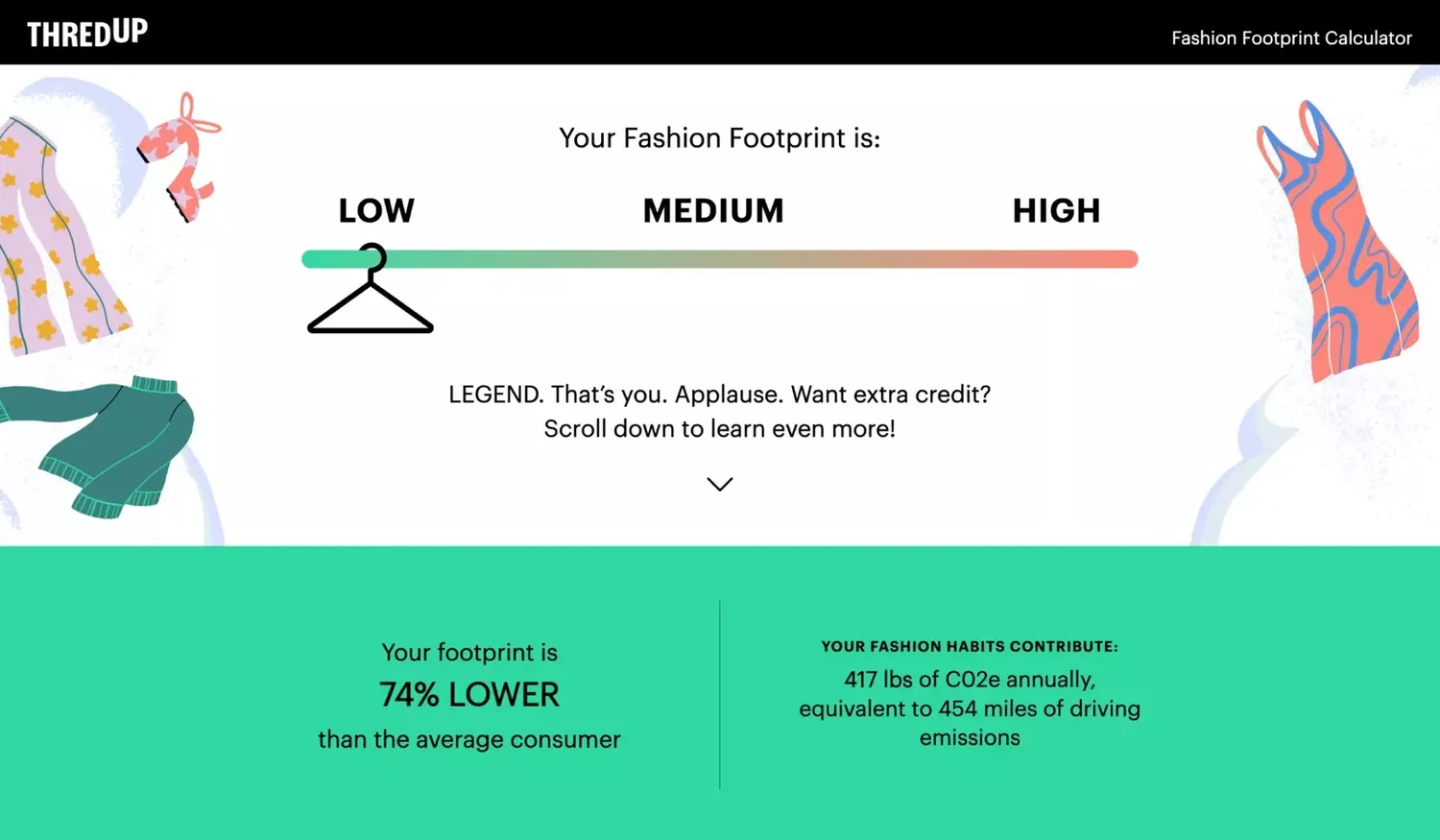A simple new online calculator is set to help us all reduce the individual impact of our wardrobes
Working out the environmental impact of our clothes is notoriously difficult. Estimates for fashion’s carbon footprint range from four per cent to 10 per cent of global greenhouse gas emissions, due to the challenges in measuring the industry’s vast and unwieldy supply chain. It’s no wonder, then, that many consumers struggle to understand the impact of their own wardrobes, considering the lack of data available, and the huge variety of materials and production methods that are used.
That’s why US resale site ThredUp has launched its new online Fashion Footprint Calculator to help simplify the process. From how often you buy new clothes to how much you wash and dry clean them, the tool guides you through 10 questions, before calculating the carbon footprint of your shopping habits annually and how this compares to the average consumer.
“There’s so much information out there around fashion’s impact on the environment, but it’s hard to sort through it all and know how much as individuals we can actually reduce our footprint,” Erin Wallace, ThredUp’s vice president of integrated marketing, tells Vogue.
ThredUp partnered with third-party life cycle assessment (LCA) specialists Green Story Inc to create the tool, which draws on existing studies and data, including a report published in November 2022 that looked at the global warming potential of 15 garments – including tops, dresses and coats – based on specific assumptions around material composition and the production process. According to the research, coats – often made from resource-intensive materials such as wool – have the highest product footprint, followed by sweaters and pants and jeans.
Related: 9 tips for upcycling your clothes

ThredUp’s new Fashion Footprint Calculator will help you work out the carbon footprint of your wardrobe. .
Luckily, though, there are a number of ways you can reduce your footprint – including shopping second-hand. In fact, ThredUp’s latest figures suggest that buying and rewearing pre-loved clothing can reduce the carbon footprint of a garment by an average of 25 per cent, due to the fact that the vast majority of emissions come from production of the garment itself. “That’s not buying second-hand in addition to new, it’s replacing something that you would have purchased new with something second-hand instead,” Wallace explains.
Meanwhile, ThredUp’s calculator notes that you can also cut down the environmental impact of your clothes by reselling or donating unwanted garments, not returning online purchases (which can end up in landfill), and air drying your clothes. Selecting standard shipping, instead of express, when buying online can also help reduce your carbon footprint, as well as washing your clothes at cold temperatures and repairing your clothes instead of throwing them out.
Still, it goes without saying that major retailers will need to take action in order to cut the emissions of the industry as a whole – and resale could play an important role in that. According to ThredUp’s 2023 Resale Report, if brands produced one fewer item for every item consumers currently purchase second-hand instead of new, it could reduce production by nearly eight per cent by 2027.
In the meantime, we can all reduce the individual impact of our wardrobes as much as possible, whether that’s committing to only buying five new things a year to stay within fashion’s carbon budget (as suggested by another recent report by the Hot Or Cool Institute), or taking on board the tips outlined by ThredUp’s Fashion Footprint Calculator. “[We want] to help people become more educated about the impact of their fashion habits, and set the goal of lessening their impact,” Wallace concludes.
